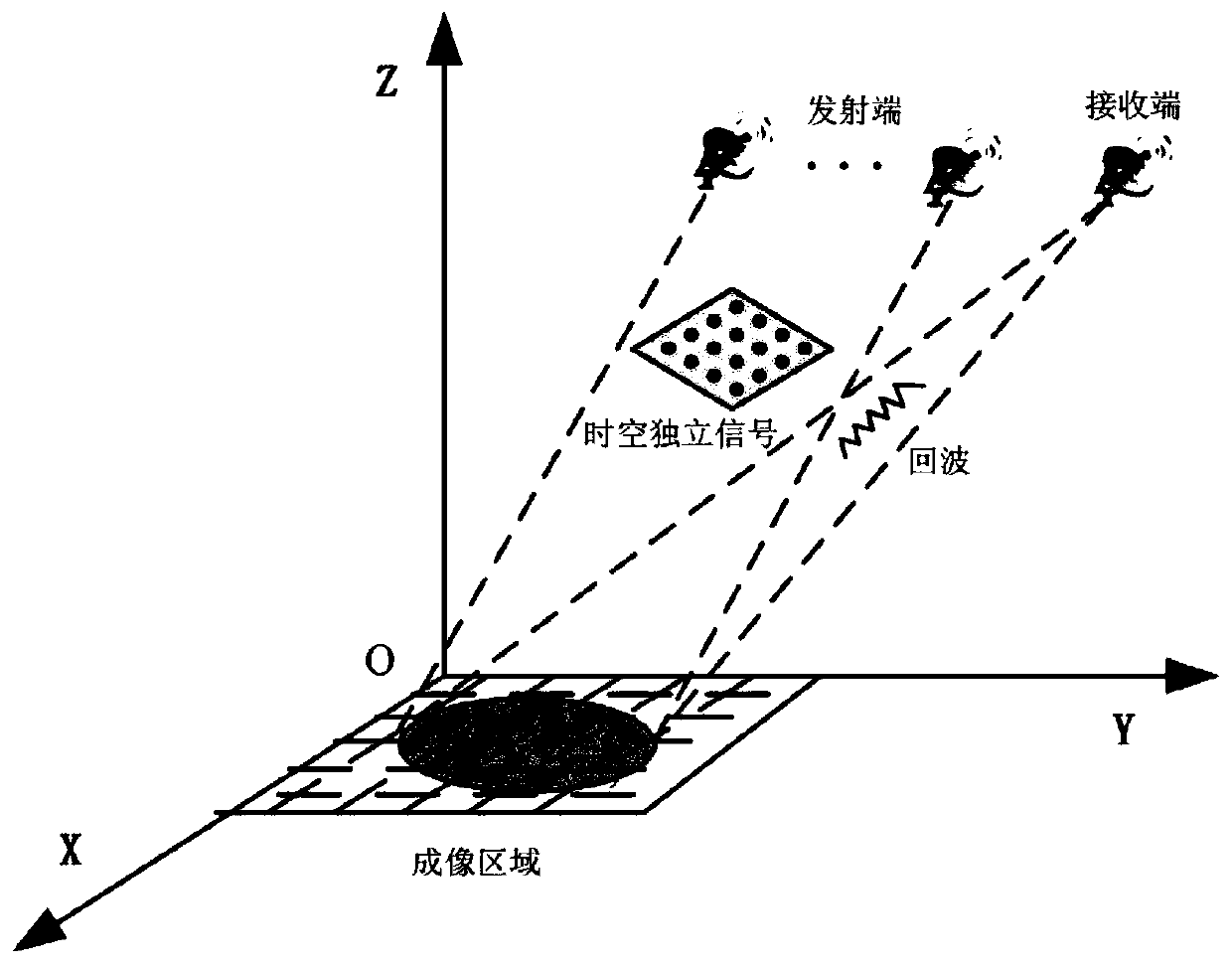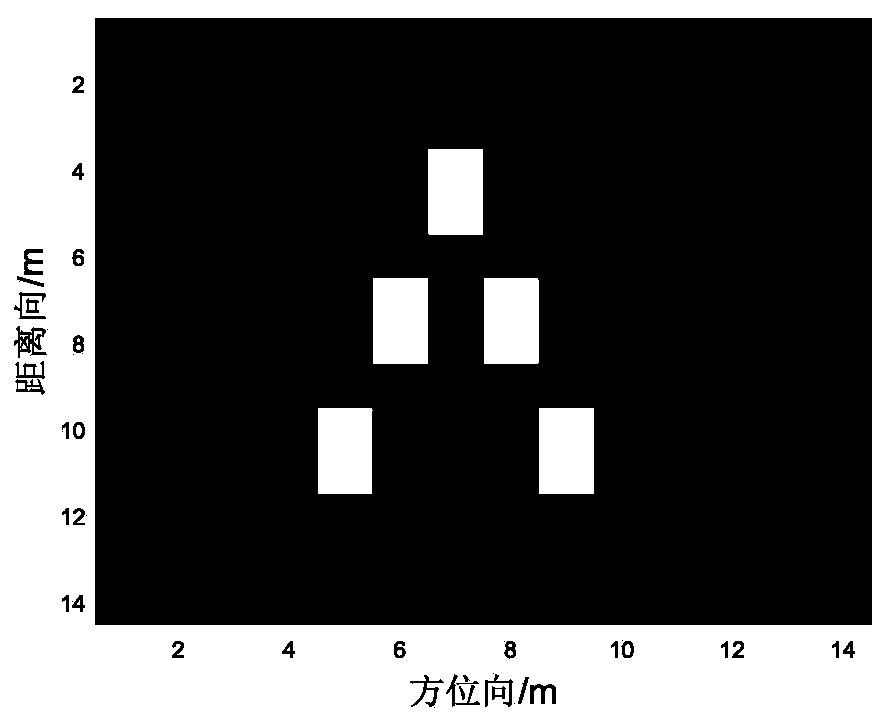Bayesian radar correlated imaging method based on disturbance matrix estimation
A correlative imaging and Bayesian technology, applied in the field of target tracking, can solve the problems of model mismatch, affecting the reconstruction performance of radar target scattering coefficient, low resolution, etc., and achieve the effect of reducing mismatch
- Summary
- Abstract
- Description
- Claims
- Application Information
AI Technical Summary
Problems solved by technology
Method used
Image
Examples
Embodiment 1
[0042] As a new radar imaging technology, radar correlation imaging has shown great advantages in improving imaging resolution. The main process of classic optical correlation imaging is: an incoherent thermal light source emits two highly correlated optical signals, which are called detection signals and reference signals, and the transmission coefficient of the target can be reconstructed by correlating the reference signal with the received signal . Based on the study of classical optical imaging, it can be concluded that radar correlation imaging mainly obtains the inversion image of the radar detection area by correlating the radiation field and the target scattering field. When using radar correlation imaging, the radar array can be regarded as It is the signal source of radar correlation imaging. The signal emitted by each array element is the signal radiated by the entire signal source at different spatial positions, and the superposition of the emitted signals of all ...
PUM
 Login to View More
Login to View More Abstract
Description
Claims
Application Information
 Login to View More
Login to View More - R&D
- Intellectual Property
- Life Sciences
- Materials
- Tech Scout
- Unparalleled Data Quality
- Higher Quality Content
- 60% Fewer Hallucinations
Browse by: Latest US Patents, China's latest patents, Technical Efficacy Thesaurus, Application Domain, Technology Topic, Popular Technical Reports.
© 2025 PatSnap. All rights reserved.Legal|Privacy policy|Modern Slavery Act Transparency Statement|Sitemap|About US| Contact US: help@patsnap.com



